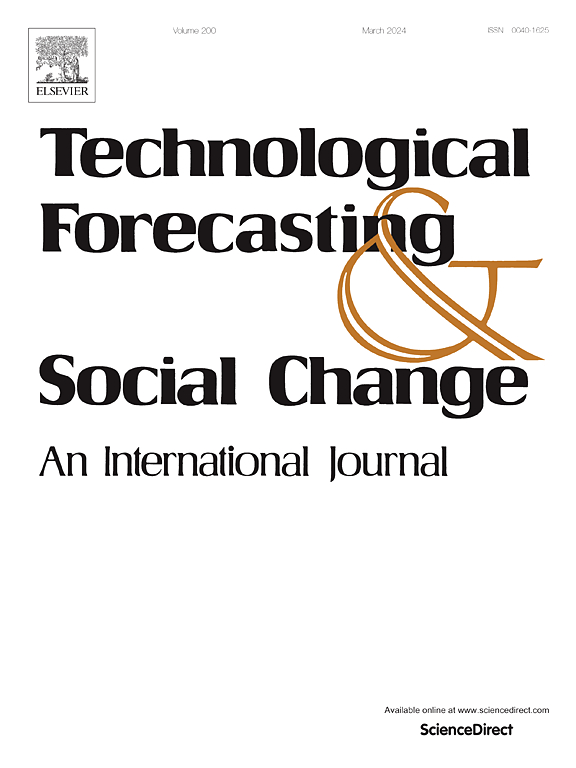Big data analytics-enabled dynamic capabilities for corporate performance mediated through innovation ambidexterity: Findings from machine learning with cross-country analysis
IF 12.9
1区 管理学
Q1 BUSINESS
Technological Forecasting and Social Change
Pub Date : 2024-11-07
DOI:10.1016/j.techfore.2024.123851
引用次数: 0
Abstract
Practitioners and academics question how big data analytics (BDA) generates business value across diverse economic contexts. Early research on BDA capabilities has often been geographically concentrated, typically focusing on individual countries without comparing emerging and advanced economies. This study addresses this issue by exploring how BDA enables dynamic capabilities to influence innovation ambidexterity, drive corporate performance, and navigate environmental uncertainties in developing and developed economies. Therefore, the research model has been tested using 313 samples from Brazil, India, and the United States of America. Results suggest that BDA enabled dynamic capabilities to play an essential role in corporate performance mediated through innovation ambidexterity with different path effects for countries. A post hoc analysis was conducted to investigate the insignificant moderating effects of environmental uncertainties on the relationship between BDA-enabled dynamic capabilities and innovation ambidexterity and address this unexpected result. ML techniques demonstrated that high, medium, and low levels of innovation ambidexterity can be predicted by big data analytics-enabled dynamic capabilities under environmental uncertainty in 79 %. Higher innovation ambidexterity is concentrated in Brazilian prospector firms, mature-aged and in large sizes under higher environmental uncertainty. American and Indian firms are predominant in achieving a medium level of innovation ambidexterity by the analyzer and defender orientation strategy and are young-age and middle-size firms under higher environmental uncertainty.
以创新灵活性为中介,通过大数据分析提高企业绩效的动态能力:机器学习的跨国分析结果
从业人员和学者对大数据分析(BDA)如何在不同的经济环境中产生商业价值提出了质疑。有关 BDA 能力的早期研究往往集中在地域上,通常只关注个别国家,而不对新兴经济体和发达经济体进行比较。本研究针对这一问题,探讨了 BDA 如何使动态能力影响创新的灵活性、推动企业绩效,以及在发展中经济体和发达经济体中驾驭环境的不确定性。因此,研究模型使用了来自巴西、印度和美国的 313 个样本进行了测试。结果表明,BDA 使动态能力通过创新灵活性在企业绩效中发挥重要作用,不同国家的路径效应不同。为了研究环境不确定性对 BDA 所促成的动态能力与创新灵活性之间关系的不显著调节作用,我们进行了事后分析,以解决这一意外结果。ML 技术表明,在环境不确定性条件下,大数据分析支持的动态能力对高、中、低水平创新灵活性的预测率分别为 79%。在环境不确定性较高的情况下,创新灵活性较高的企业主要集中在巴西的勘探者企业、成熟企业和大型企业。在环境不确定性较高的情况下,美国和印度企业主要采用分析者和防御者导向战略来实现中等水平的创新灵活性,这些企业多为年轻企业和中等规模企业。
本文章由计算机程序翻译,如有差异,请以英文原文为准。
求助全文
约1分钟内获得全文
求助全文
来源期刊
CiteScore
21.30
自引率
10.80%
发文量
813
期刊介绍:
Technological Forecasting and Social Change is a prominent platform for individuals engaged in the methodology and application of technological forecasting and future studies as planning tools, exploring the interconnectedness of social, environmental, and technological factors.
In addition to serving as a key forum for these discussions, we offer numerous benefits for authors, including complimentary PDFs, a generous copyright policy, exclusive discounts on Elsevier publications, and more.

 求助内容:
求助内容: 应助结果提醒方式:
应助结果提醒方式:


